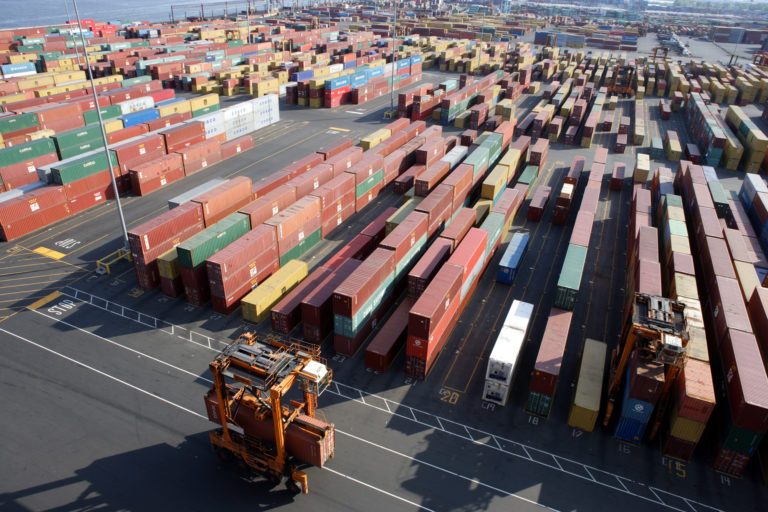Commencement of Industrial Action
Aurora have received confirmation that industrial action has commenced at U.S. East Coast and Gulf Coast ports. This action is expected to have significant implications for global supply chains, including Australian trade.
The Freight Trade Alliance (FTA) have put together the following information to assist you in understanding the potential impacts and preparing for possible disruptions.
What is the current situation with the port strikes?
The International Longshoremen’s Association (ILA), representing 45,000 dockworkers across 14 ports, has initiated a strike after failing to secure a new labour agreement with the United States Maritime Alliance (USMX) by the September 30, 2024 deadline. This marks the first significant East Coast dock strike since 1977.
Which ports are affected?
The ILA strike affects 36 ports in total, in which 14 are major U.S. East Coast and Gulf Coast ports, including Baltimore, Boston, Charleston, Houston, Jacksonville, Miami, Mobile, New Orleans, New York/New Jersey, Norfolk, Philadelphia, Savannah, Tampa, and Wilmington. These ports are critical hubs for U.S. containerised trade.
When is the strike expected to end?
There is no clear end in sight for the strike. Even if it lasts only a few days, its effects could be felt into 2025 due to port congestion and ongoing supply chain disruptions. U.S. Customs & Border Protection (CBP) estimates that the U.S. economy may lose up to $5.3 billion daily due to the strike.
What are the key issues leading to the strike?
The strike revolves around disagreements on wage increases, benefits, and port automation. The ILA has rejected what they called an “unacceptable” wage package, which reportedly included a near 50% wage increase over 6 years. According to sources familiar with the negotiations, this offer was made as late as 30 September, but the union found it insufficient in addressing inflation and fair compensation, with reports suggesting union expectation of a 77% wage increase.
The ILA is also demanding a complete ban on automation in critical port functions such as crane operations and container handling, arguing that automation threatens longshore workers’ job security. These deep-rooted issues, compounded by both sides’ firm positions, have stalled negotiations, leading to the strike. The dispute highlights broader concerns about the future of port operations, as workers resist technological changes that they fear could erode their livelihoods.
Will the strike affect global trade?
Yes, the strike has already begun to significantly impact global trade. Ports on the East Coast and Gulf Coast handle 40-50% of U.S. container imports, and disruptions are affecting shipments, particularly from Europe and Latin America. Vessels are likely to remain anchored outside affected ports, with significant delays in returning to the Far East, causing broader disruptions to global shipping schedules well into 2025.
Can the government step in to prevent or resolve the strike?
The U.S. government has the option to intervene under the Taft-Hartley Act, a federal law that grants the President the authority to act in labour disputes that threaten national health or safety. If invoked, the Taft-Hartley Act could enforce an 80-day “cooling-off” period during which workers would return to work, and negotiations would continue. This is designed to temporarily alleviate the economic impact and allow further discussions between the union and employers.
However, even if the Taft-Hartley Act is invoked, it does not guarantee a long-term resolution. After the 80-day period ends, if no agreement is reached, the union is legally allowed to resume the strike. This could lead to renewed disruption, as both parties would need to return to negotiations without the guarantee of reaching a deal. Historically, invoking the Taft-Hartley Act has been a temporary measure, and in some cases, it can escalate tensions between labour and employers, potentially leading to a more prolonged dispute once the cooling-off period expires.
The Biden administration has indicated that it is not currently considering invoking the Taft-Hartley Act, likely due to political sensitivities ahead of the upcoming Presidential elections. Instead, it is encouraging both parties to return to the negotiating table and resolve the dispute without federal intervention.
How will the strike impact importers and exporters?
Importers and exporters should expect significant delays. Cargo destined for U.S. East Coast and Gulf ports may be stuck on vessels or delayed within congested terminals. Exporters are facing equally challenging conditions, with disruptions in shipment schedules and increased costs due to work disruption surcharges. Importers have been trying to avoid these delays by increasing shipments in advance of the strike and upcoming tariff increases, which has contributed to the heightened traffic at U.S. West Coast ports.
How will the strike affect Australian trade?
The strike is expected to have a significant impact on Australian trade over time, as the U.S. is Australia’s second-largest trading partner after China. According to recent trade data, the U.S. accounts for approximately 9-10% of Australia’s exports and around 12-13% of its imports, making it a key player in Australia’s international trade. With East Coast and Gulf Coast ports handling nearly half of all U.S. container imports, the disruption will likely affect Australian exports of goods like beef, wine, and pharmaceuticals to the U.S. market. Likewise, imports of U.S. machinery, medical equipment, and other critical supplies to Australia could be delayed.
The potential backlog at U.S. ports could slow down the movement of goods, increasing shipping times and costs. Australian businesses that rely on timely imports from the U.S. may experience supply shortages and face higher freight rates due to the redirection of shipping routes and surcharges.
Aurora are actively monitoring this situation with our US agents and will keep you closely informed as the situation develops. If you have any questions, please don’t hesitate to reach out to our to our experienced team.

